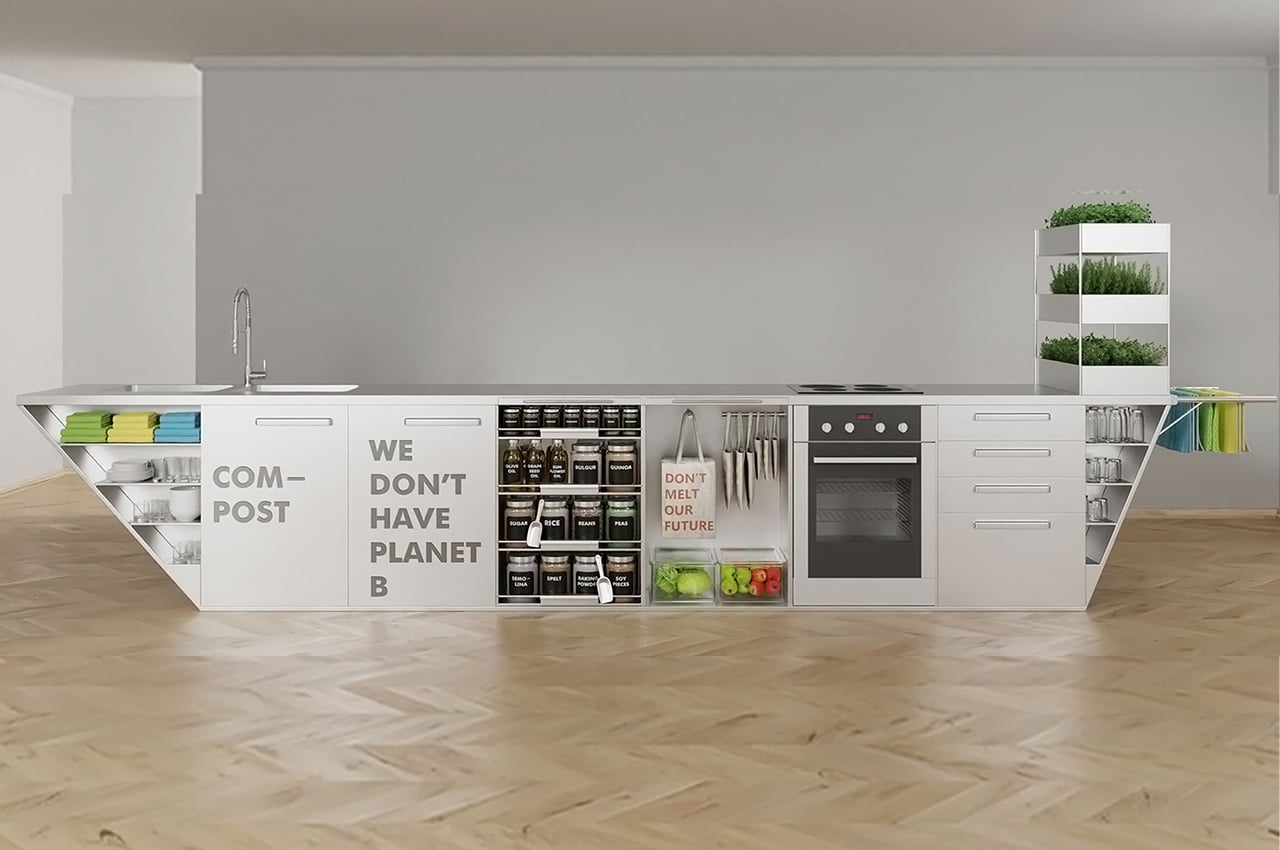
Did you know that 75 years ago, every kitchen was a zero-waste kitchen? Fun fact: in 1926, Austrian architect Margarete Schütte-Lihotzky’s kitchen had a wall of bins to store ingredients without any packaging at all! The concept of a zero-waste kitchen is not new and is certainly still in practice in many South Asian and East Asian countries that still use traditional storing and packaging methods. Obviously, our lives have changed and advanced tremendously over the last 75 years, so Ivana Steiner of Vienna is designing a zero-waste kitchen that fits our modern lifestyle and homes.
Steiner visited six zero-waste stores in Vienna for research and as an architect who has always loved working on kitchens, she took it upon herself to bring change through design. She wanted to dedicate her kitchen design to work around the current climate crisis while combating it. “Zero Waste does not hope that politics and business will tell you how and when you will implement your environmental measures and goals, but rather that each of us can actively contribute to climate protection through a resource-saving lifestyle. Zero waste not only includes avoiding waste but also how we deal with nutrition and cooking. If we concentrate on fewer, regional foods without packaging, we can actually implement changes in our immediate surroundings,” says Steiner.
This zero-waste kitchen is built from recycled stainless steel made in electric arc furnaces and it lasts forever. The large table is the core of the design, it is meant to be used as a cooking and eating surface. The structure has designated areas for glass containers, baskets for fruit and vegetables, a worm box, storage space for multi-purpose vessels, linen bags, and a vertical herb garden – it is indeed a highly functional and multi-faceted design! The worm box regularly provides humus which can be used for the herb garden and if the kitchen is in a dark area of the house or if you live in a country with little sunlight then you might need a daylight lamp for your herb garden.
The built-in herb garden and worm composter together make the process very efficient even for those who are taking beginner steps into a sustainable lifestyle – this way, you’re set up for success because the maintenance is integrated into how the kitchen functions. This kitchen stores everything in jars to avoid producing waste in the form of bin liners. Jars are also easier to refill if you take them to your grocery store. This was a fairly calculated design decision as the buying trend moves towards more unpacked items, especially in urban areas where the food is stored and sold in glass containers to encourage reuse. Glass jars are also sealed tightly compared to bins making it a more sanitary option.
Since the design is based on a minimalist lifestyle, the kitchen deliberately does not include upper cupboards or extra storage. You only keep things that you use every day – a limited number of 12 deep plates, 12 flat plates and 12 small flat plates, 12 water glasses, and 8 wine glasses are used and stored comfortably in the zero-waste kitchen. There is no dishwasher but it does come with a double sink for all intents and purposes as well as a rack for dishtowels. However, studies have shown that dishwashers are actually more efficient and save resources!
The European-style kitchen has a lot of prep space in form of pullout panels, a small oven as well as a tiny fridge behind the Planet B typography. Zero Waste Kitchen is small, deliberate, and purposeful in every detail and encourages a life of fresh food without waste!
Designer: Ivana Steiner
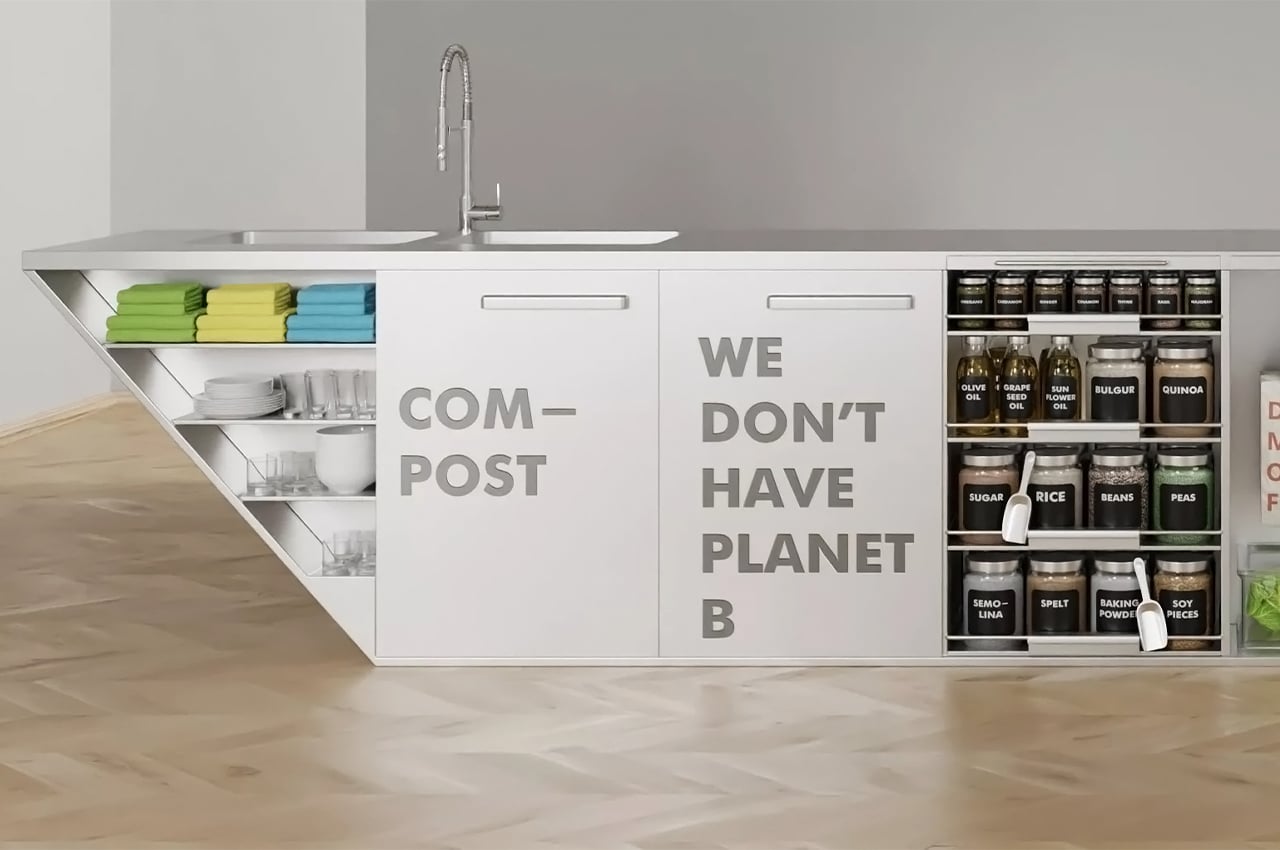
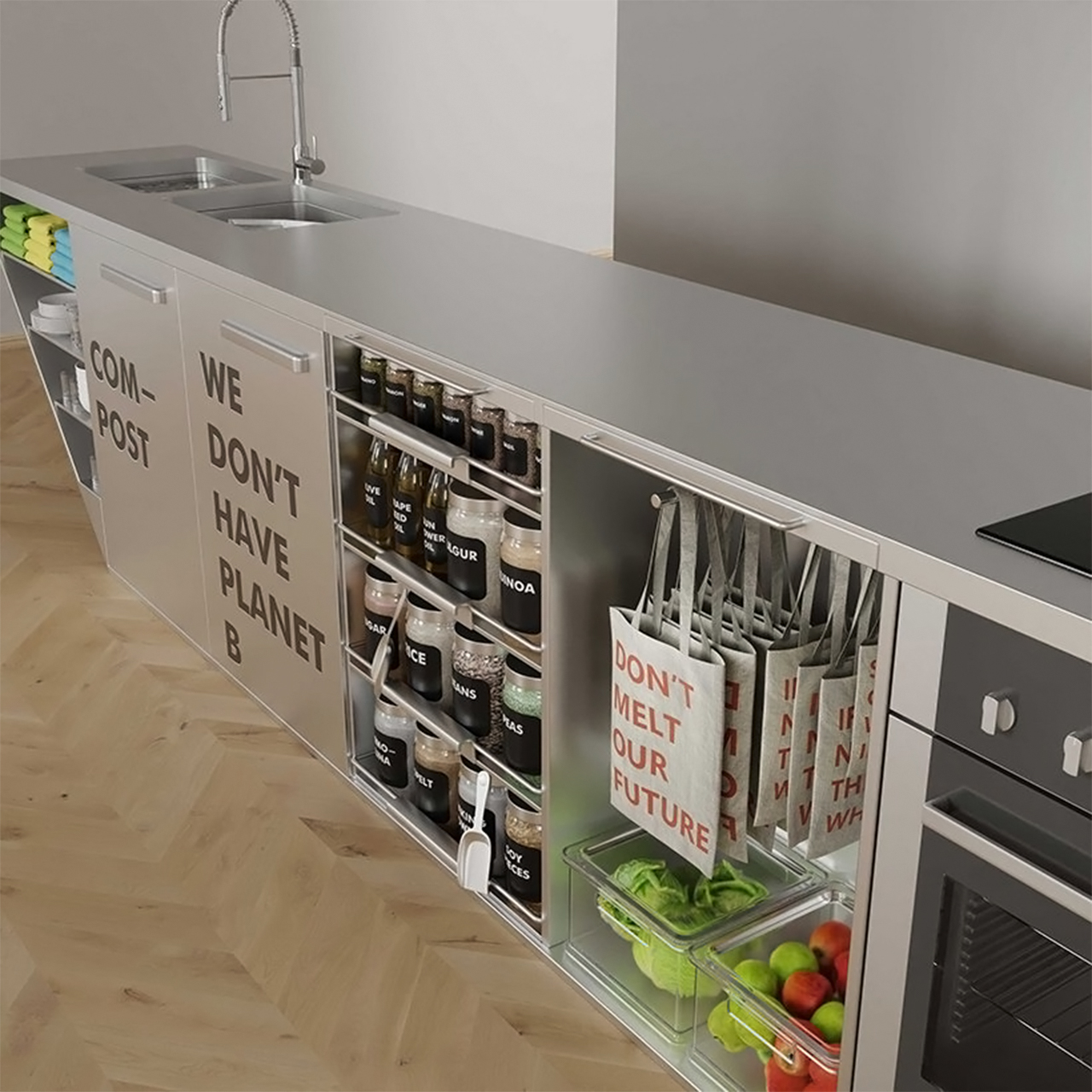
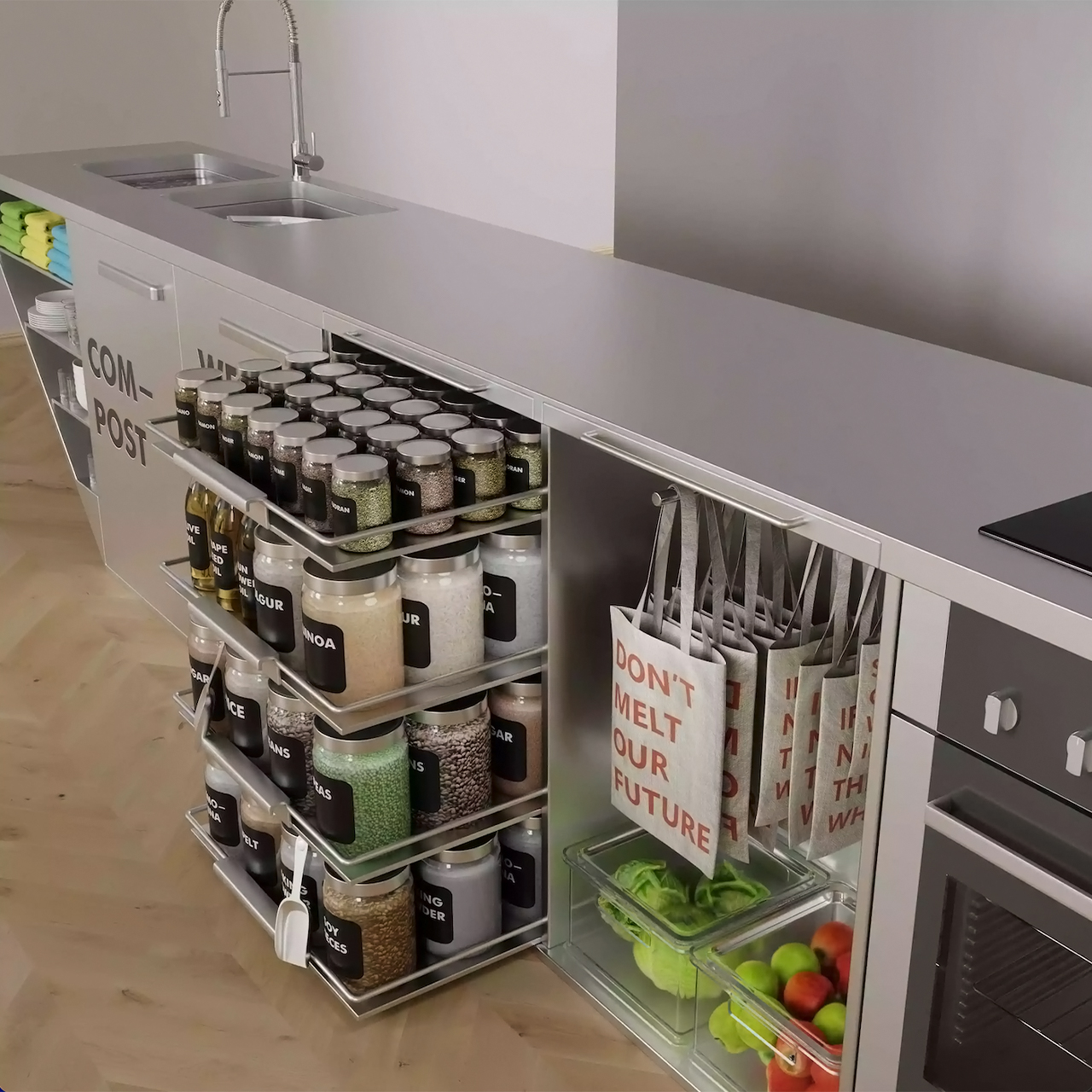
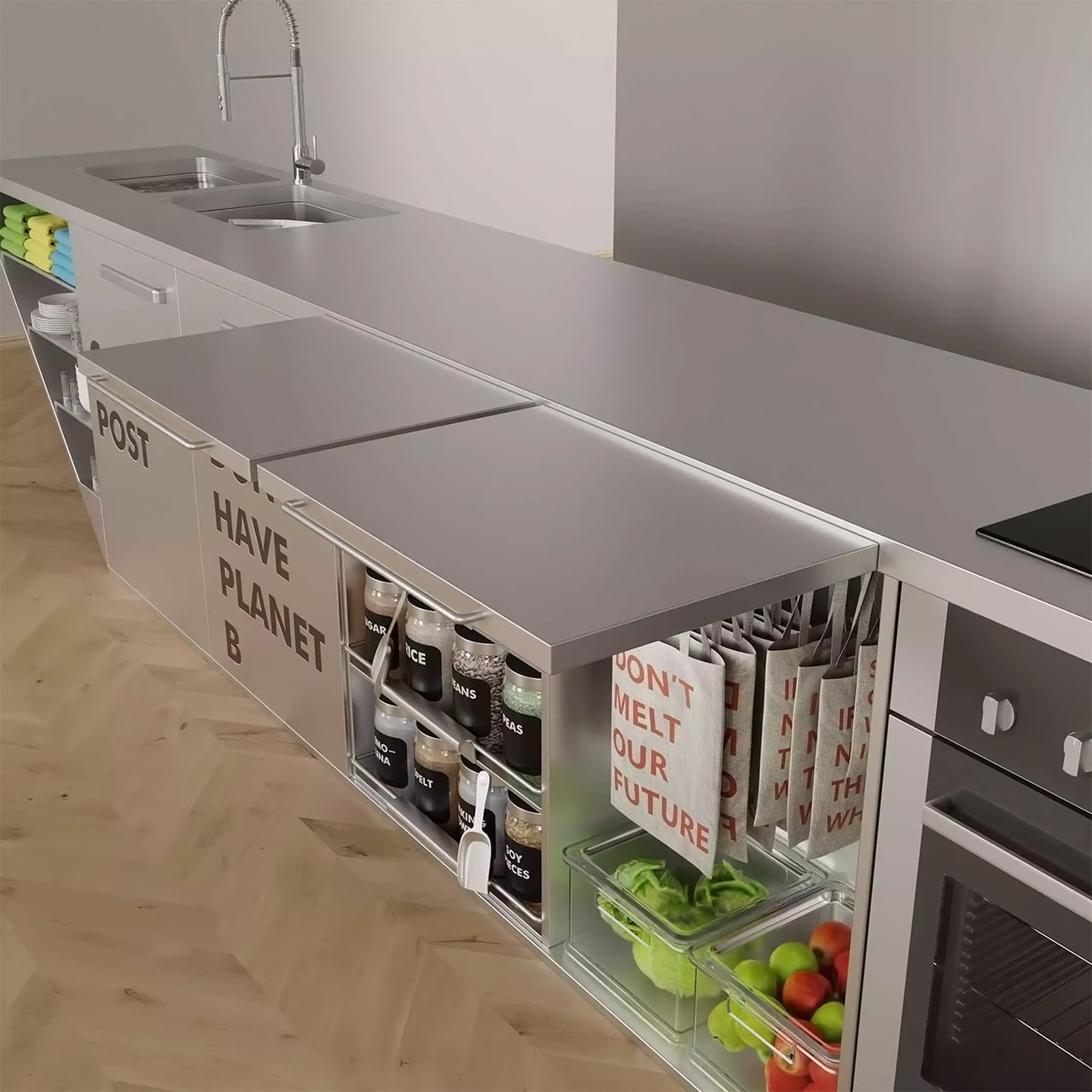
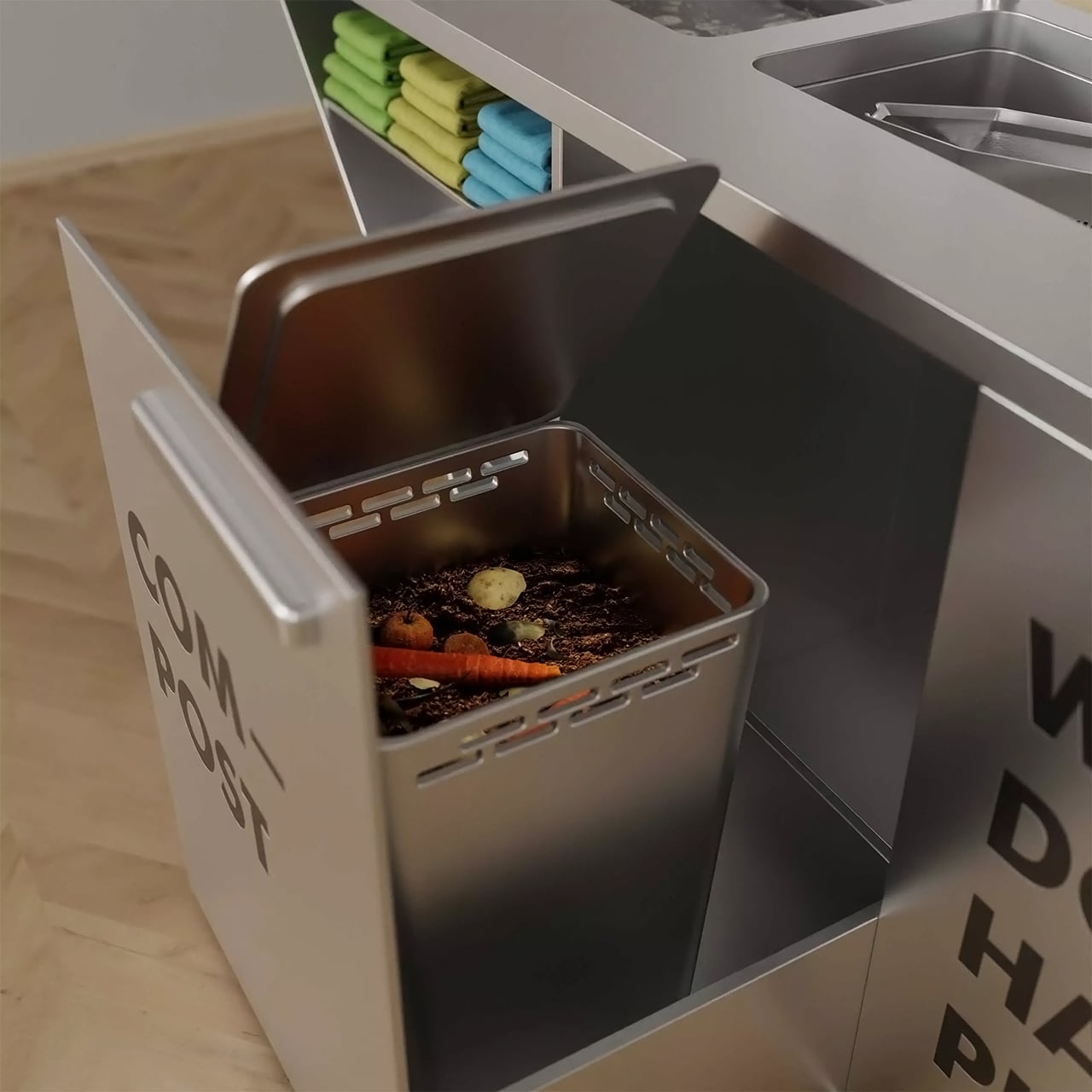
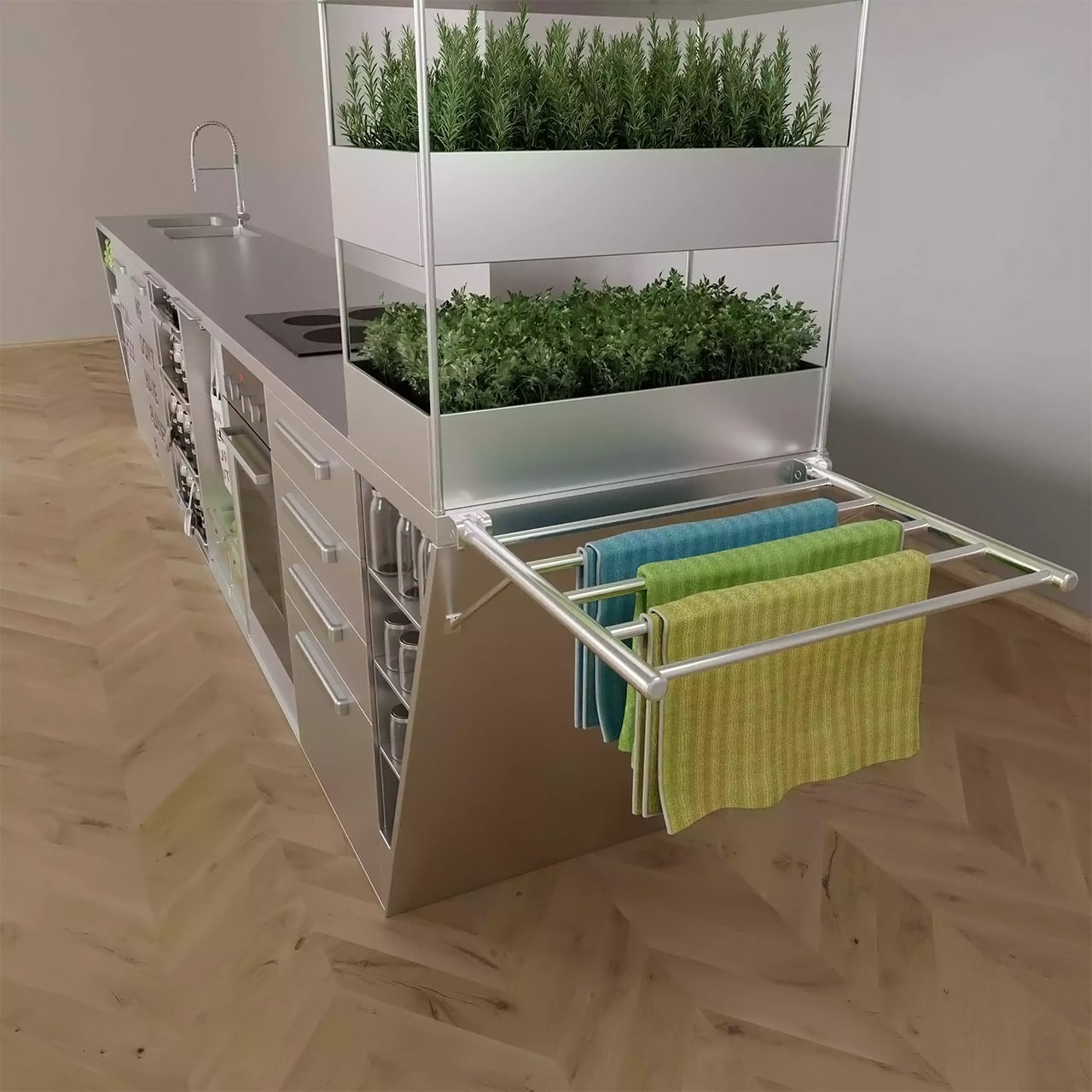
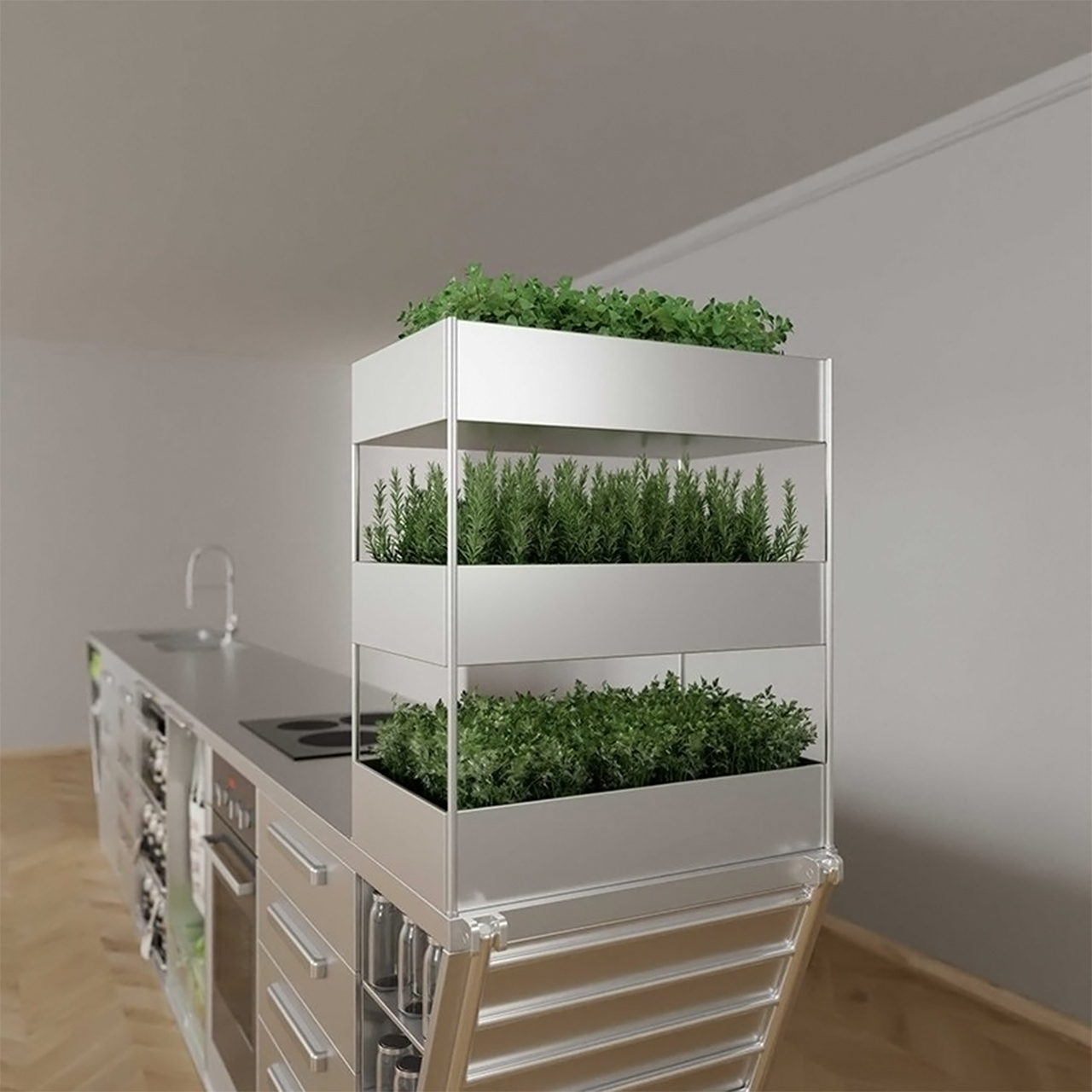
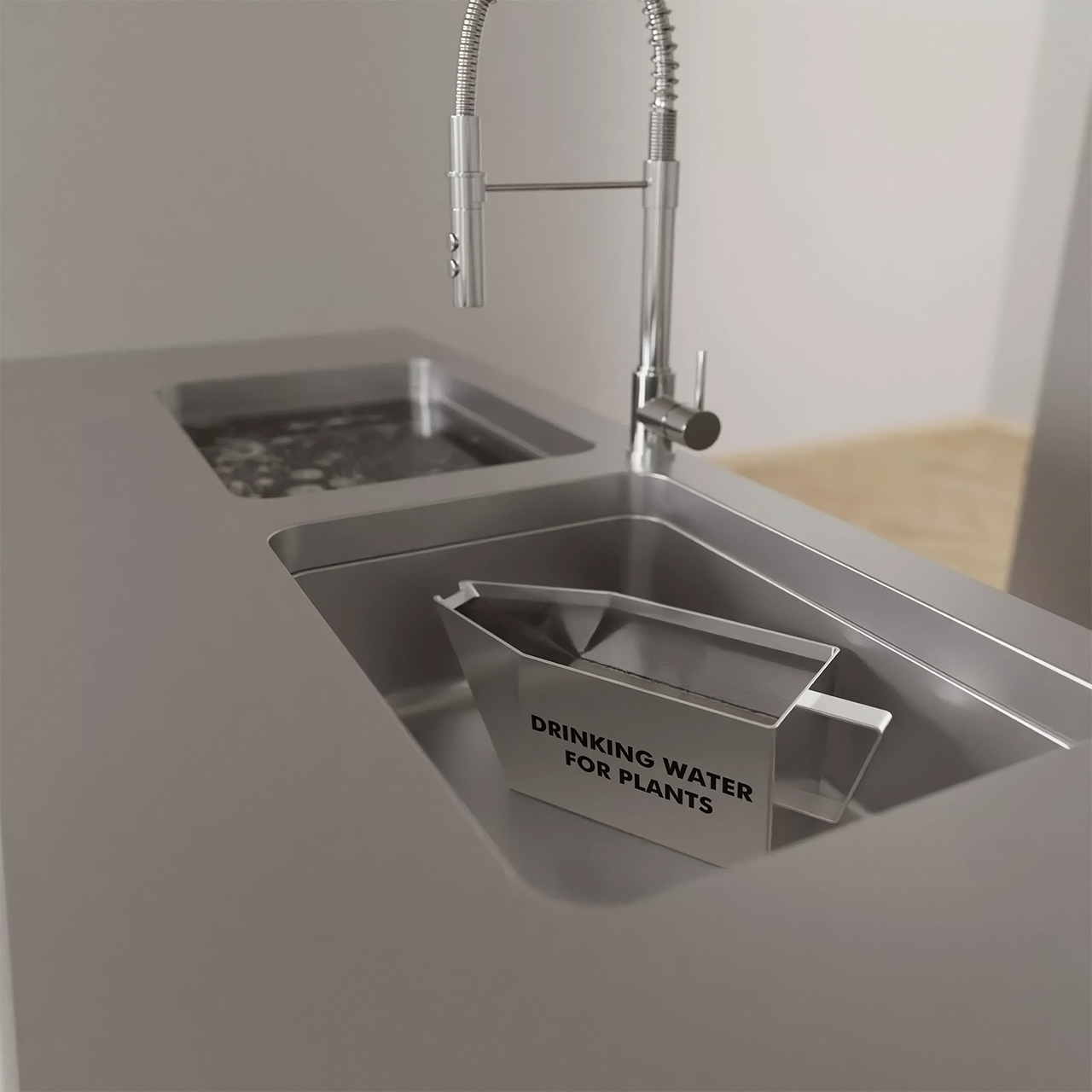
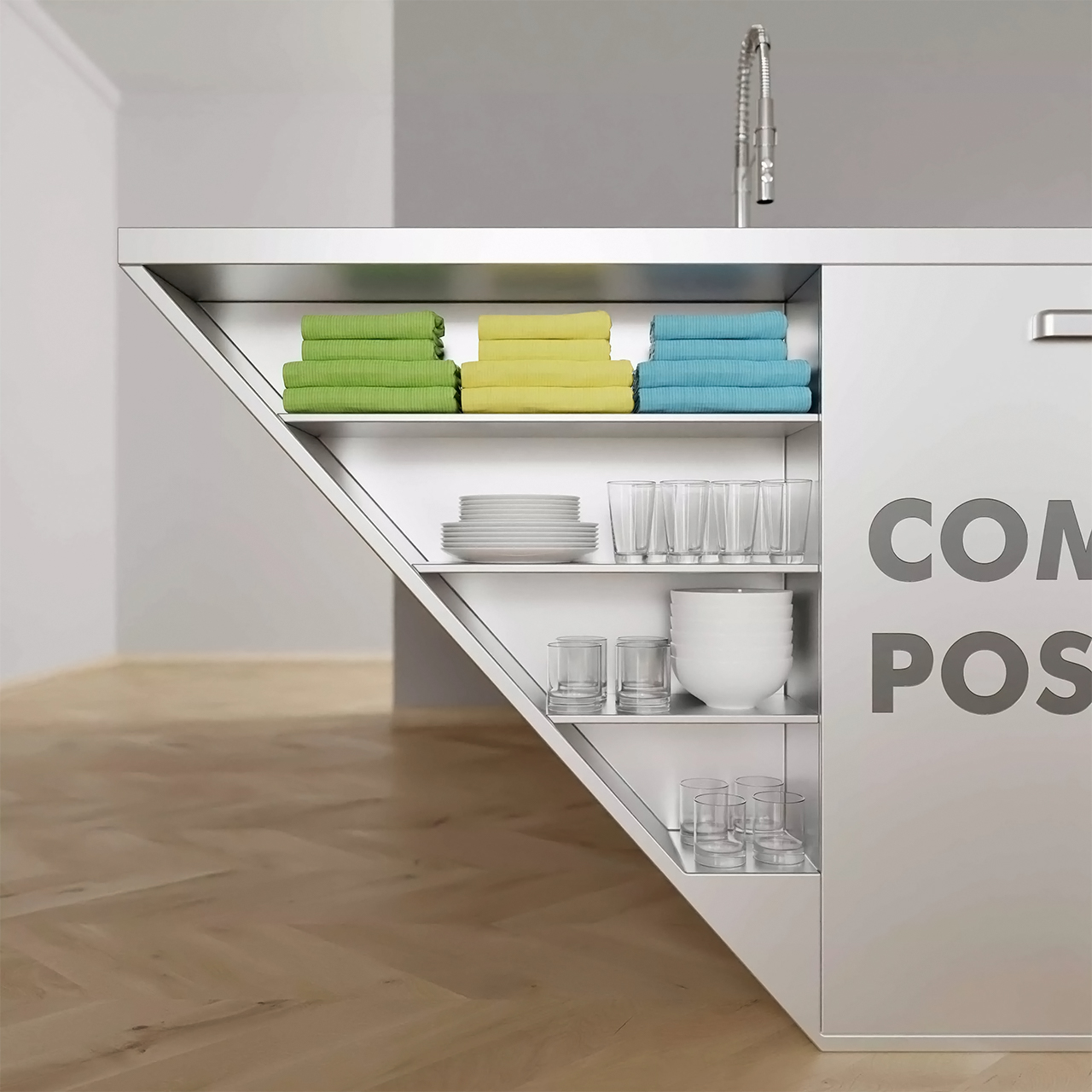
0 Commentaires